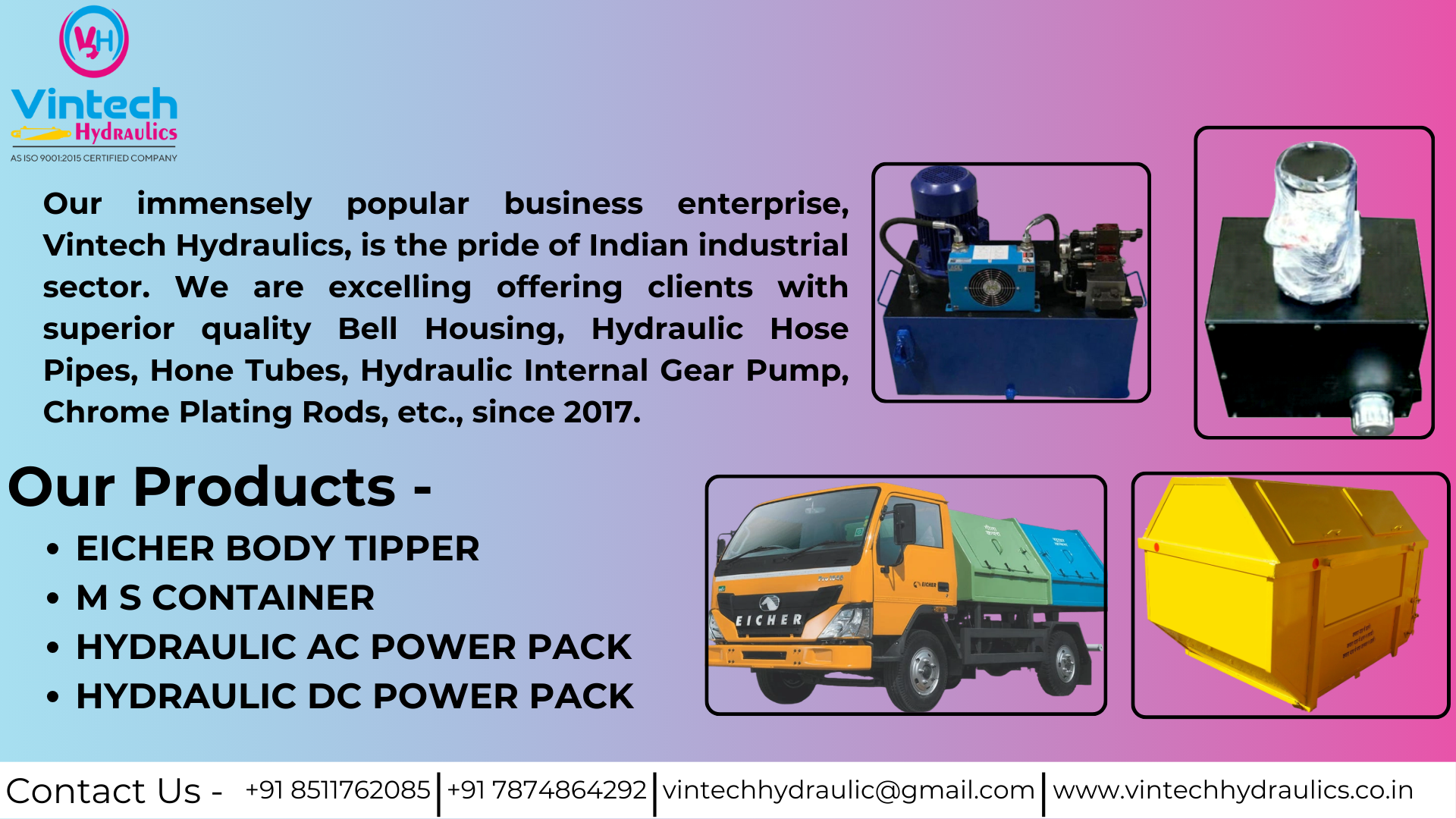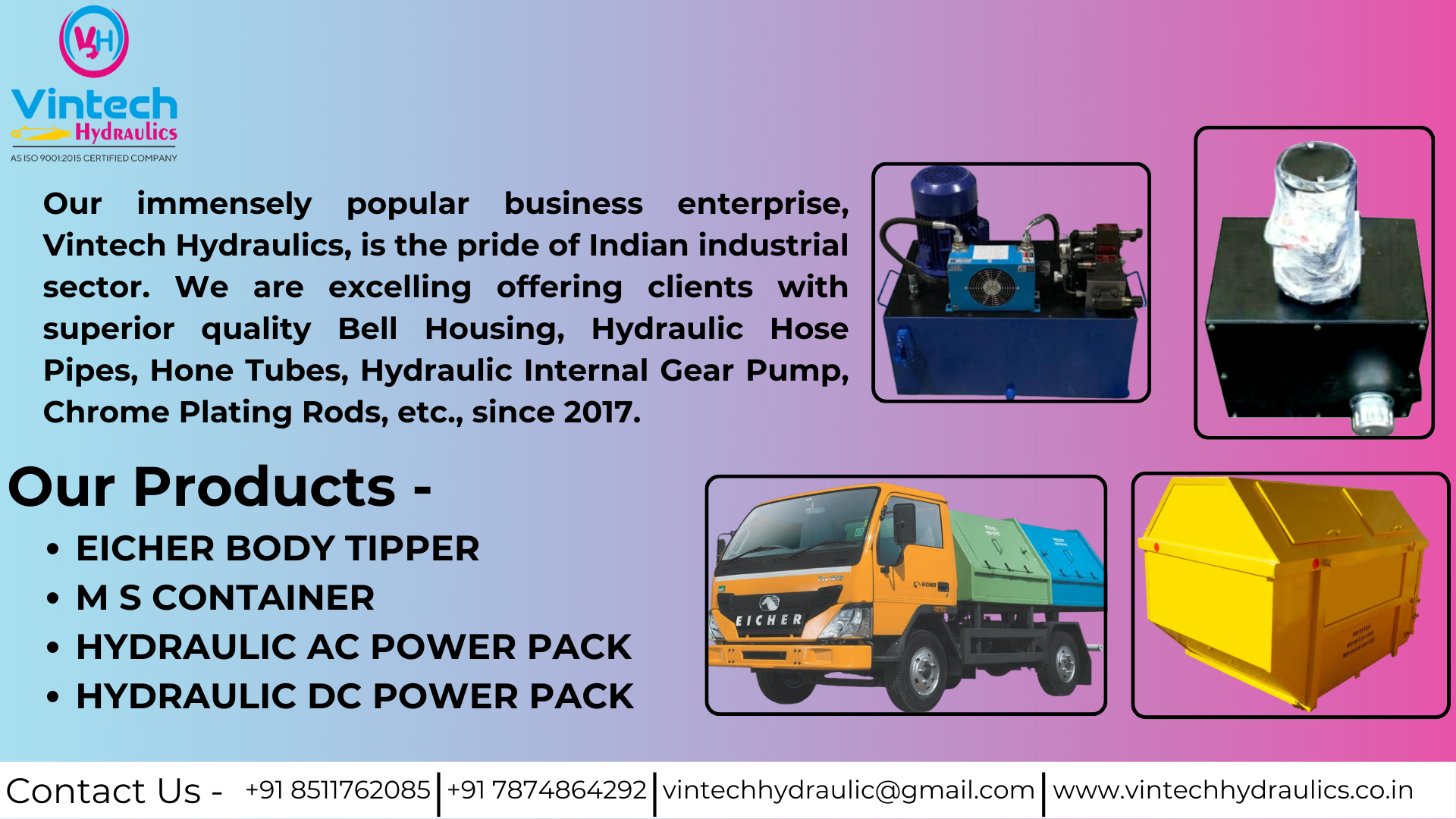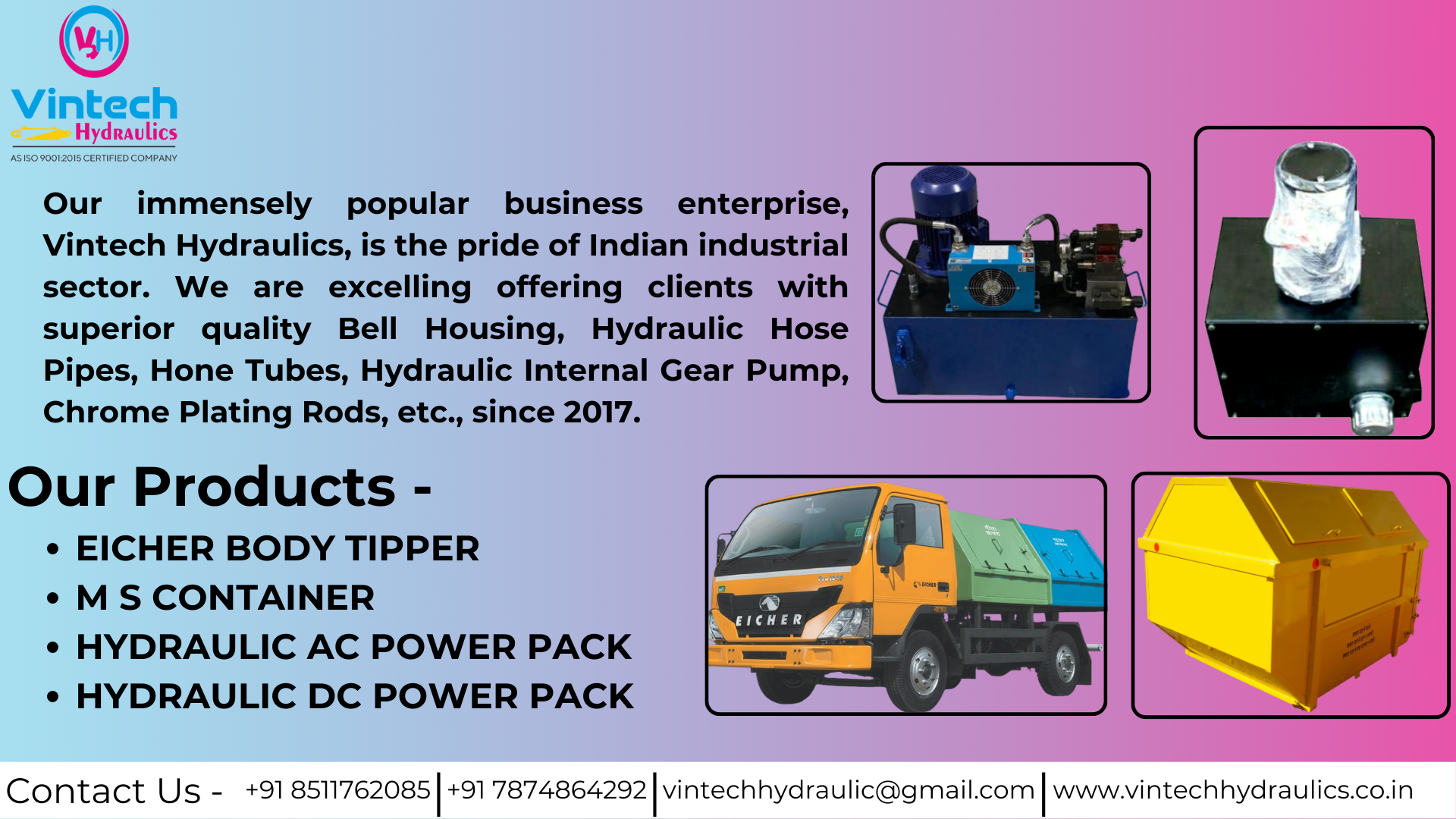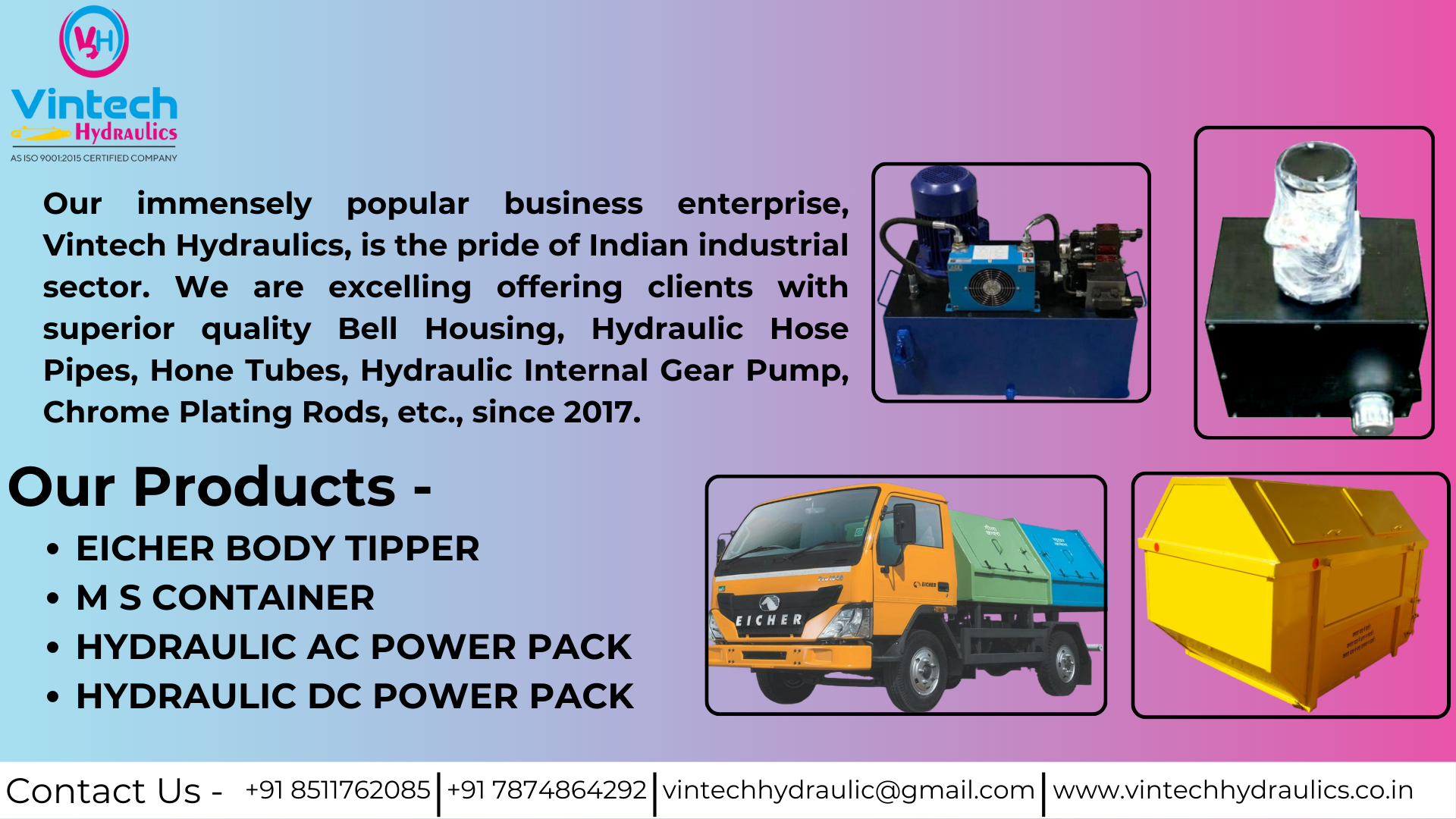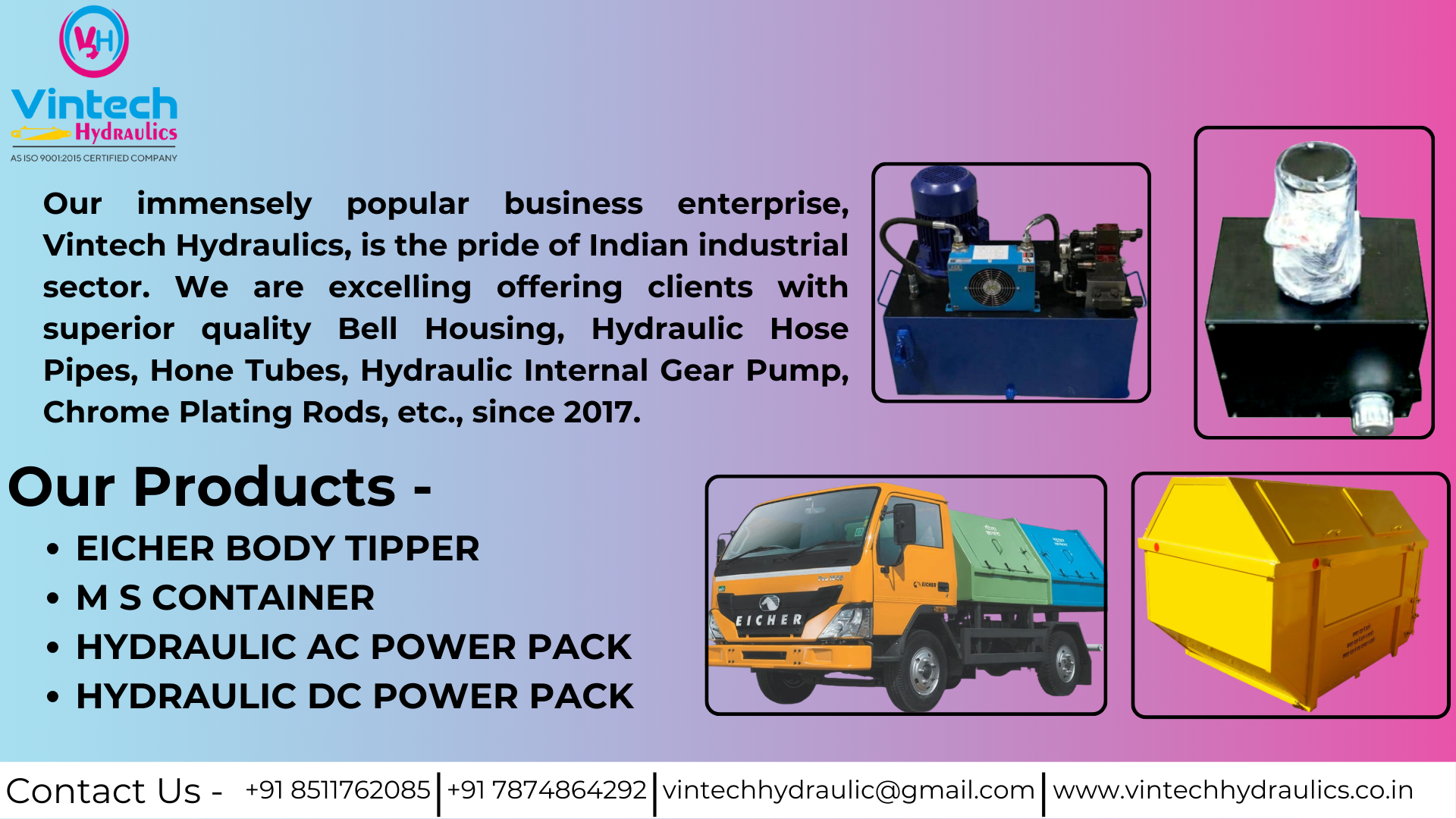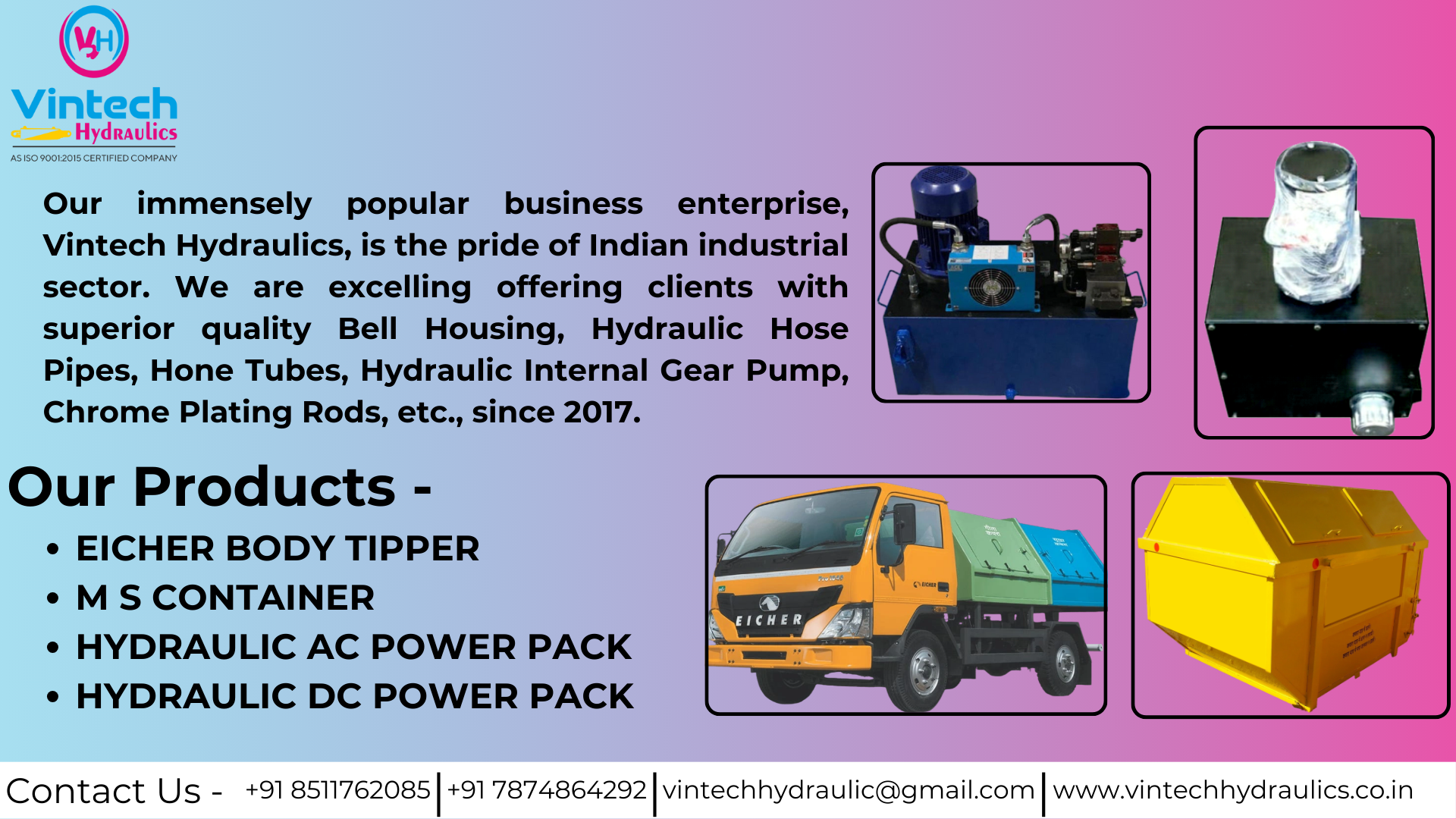
Garbage Tipper 12V DC Power Pack
Hydraulic Solenoid Valve
What is a Hydraulic Solenoid Valve?
A Hydraulic Solenoid Valve is an electrically operated directional valve used to control the flow of hydraulic fluid within a system. It uses a solenoid coil to actuate internal mechanical components, allowing or blocking the flow of oil in hydraulic circuits.
These valves are crucial in automating hydraulic operations—enabling remote or programmed control of cylinders, motors, and other hydraulic actuators.
How It’s Made – Components & Manufacturing
Key Components
| Part | Function |
|---|---|
| Solenoid Coil | Electromagnetic coil that creates motion |
| Armature (Plunger) | Moves when coil is energized to open/close path |
| Spring | Returns the plunger to its original position |
| Spool or Poppet | Controls flow direction inside valve body |
| Valve Body | Machined metal block with fluid paths |
| Electrical Connectors | For control wiring (DIN, Deutsch, etc.) |
| Seals & O-rings | Prevent fluid leakage |
Manufacturing Process
-
Design and Specification
-
Valve is designed based on number of ports (2-way, 3-way, 4-way), pressure range, and voltage (12V DC, 24V DC, 230V AC, etc.).
-
Body Machining
-
CNC-machined from steel, aluminum, or brass to precise tolerances.
-
Coil Winding
-
Copper wire wound around a bobbin to create the electromagnetic solenoid coil.
-
Assembly
-
Internal plunger, spring, and seals are inserted into valve body.
-
Solenoid coil is mounted and fixed.
-
Testing
-
Pressure tested, flow tested, and checked for electrical insulation and leakage.
Design and Specification
-
Valve is designed based on number of ports (2-way, 3-way, 4-way), pressure range, and voltage (12V DC, 24V DC, 230V AC, etc.).
Body Machining
-
CNC-machined from steel, aluminum, or brass to precise tolerances.
Coil Winding
-
Copper wire wound around a bobbin to create the electromagnetic solenoid coil.
Assembly
-
Internal plunger, spring, and seals are inserted into valve body.
-
Solenoid coil is mounted and fixed.
Testing
-
Pressure tested, flow tested, and checked for electrical insulation and leakage.
Uses of Hydraulic Solenoid Valves
| Industry | Application |
|---|---|
| Construction Machinery | Controls cylinders in excavators, loaders |
| Industrial Automation | Operates clamps, presses, and lifts |
| Agriculture | Tractors, harvesters with hydraulic attachments |
| Material Handling | Forklifts, hydraulic lifts, and hoists |
| Automotive | Hydraulic clutches, suspension systems |
| Defense Equipment | Weapon control, stabilizers |
| Plastic Injection Molding | Mold open/close control |
Importance & Significance
1. Automation & Remote Operation
Replaces manual control, allows electronic control of hydraulic functions.
2. Precision & Safety
Enables accurate flow direction control and failsafe operation.
3. Compact and Efficient
Doesn’t require mechanical linkage or human input.
4. Quick Response Time
Instant switching improves system productivity and speed.
Advantages of Hydraulic Solenoid Valves
| Advantage | Description |
|---|---|
| Compact & Lightweight | Small size but controls high-flow pressure |
| Reliable Switching | Consistent, fast open/close operation |
| Energy Efficient | Coil consumes low power; some models use pulsed current |
| Remote Controlled | Integrates easily with PLCs or control panels |
| Flexible Mounting | Available in sub-plate, threaded, or cartridge type |
| Multiple Port Configurations | 2/2, 3/2, 4/2, 4/3 valves available |
| Fail-safe Options | Spring-return to default position on power loss |
Where Hydraulic Solenoid Valves Are Used
| Sector | Specific Use |
|---|---|
| Excavators | Boom, arm, bucket control |
| Garbage Tippers | Up/down control of lift cylinders |
| E-Rickshaws | Dump bin control |
| Manufacturing Lines | Press machines, molding tools |
| Hydraulic Power Packs | Direction control of cylinders or motors |
| Medical Equipment | Precision hydraulic tables or beds |
| Agricultural Implements | Plough, drill, or cutter blade control |
Frequently Asked Questions (FAQs)
Q1. What voltages are available for solenoid valves?
A: Common options include 12V DC, 24V DC, 110V AC, and 230V AC.
Q2. How do solenoid valves work?
A: When power is applied, the coil energizes, pulling the plunger to shift the valve spool and redirect hydraulic fluid.
Q3. Are these valves safe in high pressure?
A: Yes, rated up to 315 bar (4570 psi) in industrial applications.
Q4. Can it fail in the open or closed position?
A: Yes, valves are designed to fail-open or fail-closed depending on spring orientation.
Q5. What is a 4/3 valve?
A: A 4-port, 3-position valve – commonly used for controlling double-acting cylinders with neutral center position.
Q6. Do solenoid valves heat up?
A: Yes, due to continuous current; proper duty cycle and ventilation is needed.
Types of Hydraulic Solenoid Valves
| Type | Description |
|---|---|
| 2/2 Way Valve | Simple on/off function |
| 3/2 Way Valve | For single-acting cylinders |
| 4/2 Valve | For double-acting cylinders (2 positions) |
| 4/3 Valve | 3-position with center (neutral) configuration |
| Monoblock Valve with Solenoids | Compact, multiple sections for mobile machinery |
Conclusion
The Hydraulic Solenoid Valve is a critical component in modern hydraulic systems, enabling automated and remote-controlled fluid direction for actuators and motors. From factory automation to municipal tipper vehicles, these valves play a key role in improving efficiency, safety, and operational accuracy.
Their compact size, rapid response, and integration with electronic controls make them ideal for a wide range of industries including construction, agriculture, material handling, defense, and medical machinery.
As automation continues to grow, hydraulic solenoid valves will remain indispensable in smart, responsive hydraulic systems across the world.
